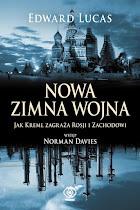Ukraine
Orange flowers
From The Economist print edition
Ukraine's unlikely revolution has a grubby and confusing aftermath
|
THE fall of communism brought Ukraine 13 years of criminal misrule. Power turned into wealth and back into power again in a seemingly endless cycle. But in late 2004, the grotesque rigging of the presidential election galvanised a real opposition movement for the first time. Well-organised and mainly youthful protestors, clad in orange, filled the centre of the capital, Kiev, setting up a tent city. Facing down both the regime's propaganda and its menacing goons, they refused to accept the election's fraudulent result. Prompted by the outside world, the crooks and spooks decided against violence, and left office under a face-saving deal.
| |
 | |
Mrs Tymoshenko's murky radiance |
The story of Ukraine's Orange revolution is gripping and tangled. Take the strange scandals that initially stoked public fury with the regime: when the headless corpse of a muck-raking, philandering journalist, Georgi Gongadze, was discovered, the investigation mysteriously tailed off amid a mixture of lies, bungling and obstruction. The foul-mouthed president, Leonid Kuchma, was bugged, supposedly by one of his own bodyguards.
Then the leading opposition candidate, Viktor Yushchenko, was mysteriously poisoned, in best KGB style; his disfigured face is an icon of the revolution. Another icon is the gorgeous Yulia Tymoshenko, a demagogic multi-millionairess, whose murky business past is matched only by the radiance of her political image.
None of these mysteries has been cleared up. The bugging seems to have been a clever plot rather than individual heroism. No one has been charged with ordering Gongadze's murder. The poisoning is a mystery too. Yet it would be easy to weave all this into an orange-tinted fairy-tale: a belated reprise of the joyous revolutions of 1989 which united central Europe with the rest of the continent.
That is certainly a temptation for Askold Krushelnycky, a British journalist whose parents fled Ukraine after the war. His book is a fast-paced account of Ukrainian history from the year dot until the revolution's end, illustrated in part by his own family's story and his own part in events. He was a vital channel for rebellious officials wanting to dish the dirt about their bosses on issues such as ballot-rigging and the Gongadze murder.
But the book suffers from the same thing that gives it authenticity: the author's own background in the Ukrainian diaspora. Self-sacrificing and determined though they often are, East European émigrés can be excessively one-sided. Mr Krushelnycky's treatment of Ukraine's ethnic minorities is as rudimentary as his treatment of Russia is snide.
It is still a good story, but the real one is a lot more complicated. Why did the Ukrainian tycoons, with their media empires and huge slush funds, desert the regime? How can Russia's puzzlingly clumsy policy be explained? Perhaps most importantly: how clean are the good guys? Some of these answers are to be found in a book edited by two well-known, American-based scholars of the post-Soviet world: Anders Aslund, an economist, and Michael McFaul, a political scientist.
If you want an exciting subject made dull, there are few better ways than having academics write about it. But the drama of the story keeps breaking through the jargon and waffle. A revealing chapter by Pavol Demes and Joerg Forbrig, two senior figures at an American pro-democracy outfit in Slovakia, provides a good account of the history of Pora (Enough), the youth movement at the heart of the protests.
But Ukraine's democratic evolution is still a work in progress; neither book deals with the mystifying squabbles and peculiar business deals that followed the Orange revolution. Mr Yushchenko and Mrs Tymoshenko fell out spectacularly and fought the March election as rivals. Now, in order to keep the revived party of the old regime out of power, they are back together again—though for how long, few would care to bet.
An Orange Revolution: A Personal Journey Through Ukrainian History.By Askold Krushelnycky.
Harvill Secker; 368 pages; £8.99
Revolution in Orange: The Origins of Ukraine's Democratic Breakthrough.
Edited by Anders Aslund and Michael McFaul.
Carnegie Endowment for International Peace; 216 pages; $33.95 and £19.99


























No comments:
Post a Comment